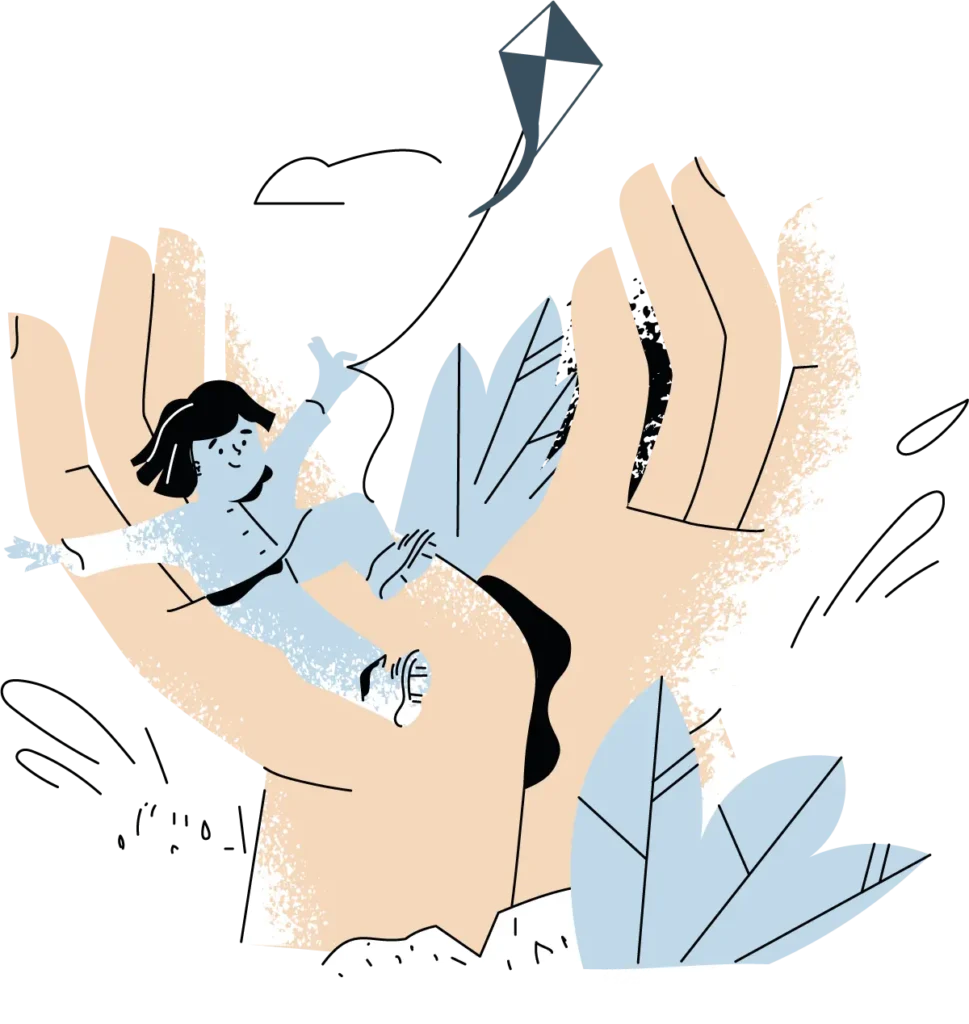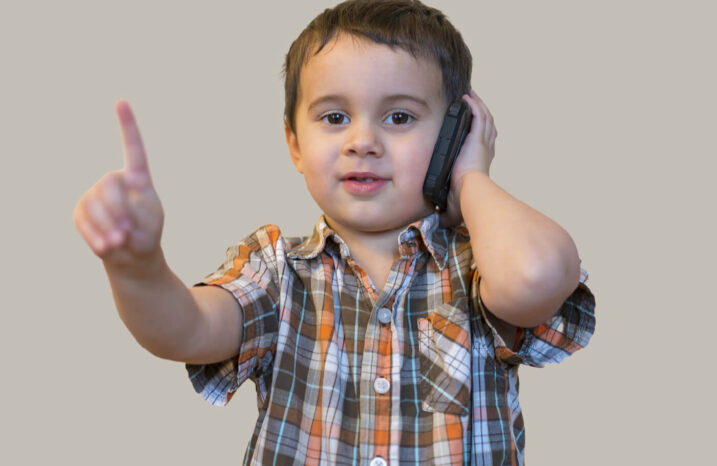What is Expressive Language Discrepancy in Childhood?
Expressive language discrepancy in childhood refers to a child’s tendency to talk much more than they listen.
Expressive language is saying what you want to say.
Receptive language is understanding what others are saying.
Expressive language discrepancy means that the child’s expressive language is much better than receptive. Put simply, they are speaking well but not listening well.
A child with these issues may go on and on in conversation without allowing others to chime in on the topic. Peers and conversation partners may tune out or get bored because they are not getting a chance to talk.
Often adults will notice that the child is not listening or comprehending what others are saying in conversation. For example, your child may have a lot to say about tornados but completely forget what the neighbors said about the storm that hit their house last night.
“It is like your child can clearly hear what is coming from their lips but not what is coming in through their ears.”
Symptoms of Expressive Language Discrepancy
- Monologues: Your child tells a story that goes on and on, seemingly forever. The story seems to have no beginning and no end. You find yourself wondering, what are we talking about now?
- Big vocabulary: Your child uses many big words when speaking to others. The words may be in an attempt to impress other kids with their knowledge of a specific topic
- Getting lost in conversation: Your child may have a long talk with a friend but walk away confused. They may have lots to say but difficulties comprehending what the others are saying
- Echolalia: Your child is repeating sounds and words that they hear someone else say like an echo. You find yourself noticing that the child is just copying what adults say rather than sharing their ideas or listening to others
- Not following directions: Your child may have difficulty comprehending and following instructions. You may notice that your child only completes the first or last step in a series of directions
Causes of Expressive Language Discrepancy in Childhood
Autism spectrum disorder: in childhood, a diagnosis of ASD includes social communication challenges and restricted or repetitive behaviors (RRB). Many children with autism tend to have better expressive language than receptive language. If your child has trouble connecting and communicating on an emotional level with peers, it may be beneficial to consider ASD. You will want to find a testing psychologist to take a comprehensive look at your child’s profile of strengths and challenges in social communication.
Language disorder: in childhood, a receptive language disorder diagnosis includes difficulty with fluent expression and language comprehension. A child who has trouble expressing themselves or understanding what others say may have a language disorder. Some children who can communicate their ideas but cannot comprehend language may have a receptive language disorder. These difficulties may or may not co-occur with autism.
Intellectual disability: in childhood, a child with an intellectual disability may have some communication problems because of verbal comprehension and processing speed challenges. When it is hard to understand and process language, sometimes children may talk more than they listen. Here special education and speech therapy can help.
ADHD: in childhood although not a common reason for this issue, some kids with ADHD may talk much more than they listen. It may be that they can understand others just fine but do not take the time to process what others are saying. Some kids with ADHD have a bit of a ‘bull in a china shop’ style that results in communication or social challenges.
What to Do About Expressive Language Discrepancy
Practice reciprocal conversations: with your child model back-and-forth conversations on a variety of topics when conversing with your child. Practice asking questions, answering questions, and sharing information with each other.
Check out the Cadey app for specific games like the ‘tennis ball’ activity to work on this important skill.
In this game, you and your child sit face-to-face and start a conversation. The child begins with the tennis ball and starts the conversation.
When the child has the tennis ball, they have the floor, and the parent must remain silent. Then, it is the parent’s turn, and the child must listen quietly while the parent talks. Keep each phrase short and fun. Congratulate your child for carrying on the back-and-forth conversation.
Teach this phrase “you have two ears and one mouth for a reason”: remind your child that people are built for connection with others. In that same vein, remind your child that it is important to spend more time listening than talking. You can tell your child, “Try to listen two times for each time you talk.” For some children, it can help to actually keep track of how often they are listening versus talking in each conversation.
Play the “what did you learn” game: when your child goes into a new social situation, ask your child to learn about the other kids in the group. See how many names your child can remember. Do the kids in the group have any pets? Did the other kids go somewhere fun on vacation? What are their favorite animals? What is their favorite color? When your child comes home from the activity, ask how many facts they can remember about the other kids. Keep it fun and reward any progress your child makes. This kind of activity is a great way to encourage your child to listen to other kids.
Join a ‘just for fun’ club: when your child is struggling a little to communicate with peers, it can be helpful to get them involved in some low-risk social activities. These are low-risk in that they aren’t competitive, and beginners are welcome. For example, a Lego club, cooking class, robotics club, or painting class are excellent social opportunities. It is helpful to get your child involved in structured activities like these that have an adult facilitator and a distinct beginning and end. In this way, your child can practice social skills in a safe and supportive environment.
Provide breaks and downtime: give your child time to talk about their favorite interests. Every kid needs some time to unwind, and that need is okay. Provide a space for your child to talk about topics they like. For example, if your child wants to tell you about every single matchbox car in their room, take time to listen. Give your child time to tell you why they like this topic so much. Let your child decompress after lots of time around other kids.
When to Seek Help for Expressive Language Discrepancy
When your child’s communication issues are getting in the way of making friends, it is good to seek help. It is okay for your child to be a bit chatty and extroverted. The time to be concerned is when peers are getting turned off by your child’s excessive talking. You may notice that they are getting rejected from peer groups or describing other kids as being mean on the playground. If your child struggles significantly with conversations, playdates, and participating in school activities, it will be important to seek help.
Professional Resources on Expressive Language Discrepancy
- Testing psychologist: to conduct a comprehensive neuropsychological or psychological evaluation of language development, cognition, social skills, and behavior. This process will help you obtain a profile of your child’s strengths and weaknesses and areas to work on in therapy
- Speech and language pathologist: to provide therapy to work on your child’s functional language skills. They may also have a group for working on social language skills
- School psychologist: to understand how your child’s social skills impact their school performance and participation. If excessive talking is an issue, getting the school team involved is recommended to see if your child needs support through multi-tiered supports (MTSS), a Section 504 Plan, or an Individualized Education Program (IEP)
Similar Conditions to Expressive Language Discrepancy
- Restricted interests: a child who has interests in a select set of specific topics or special interests
- Echoed and scripted language: a child who uses language that is echoed from others or TV, movies, books, etc.
- Sharing and showing challenges: a child who is not bringing things of their interest to peers or adults to connect socially and instead plays alone
- Language delay: a child who is not using language for communication; by age two, we expect children to use two-word phrases to communicate
- Monologues: a child who tells long stories without letting others join the conversation. These monologues often feel like the child just has to get it all out before they can go on with the conversation
- Narrative coherence: a child who tells stories that do not make sense. The story may be too literal, too detailed, or tangential. These stories have a rambling nature and leave the conversation partner confused
Book Resources on Expressive Language Discrepancy
Kroncke, Willard, & Huckabee (2016). Assessment of autism spectrum disorder: Critical issues in clinical forensic and school settings. Springer, San Francisco.
Baker, Jed. (Retrieved 2017). Social skills books and resources for ASD. http://socialskillstrainingproject.com/books.html
Berns, Roberta M. (2010). Child, family, school, community: Socialization and support.
Mendler, Allen (2013). Teaching your students how to have a conversation.
Ozonoff, Sally & Dawson, Geraldine & McPartland, James C. (2014). A parent’s guide to high functioning autism spectrum disorder: How to meet the challenges and help your child thrive.
UCLA PEERS Clinic https://www.semel.ucla.edu/peers
Giler, Janet Z. (2000). Socially ADDept: A manual for parents of children with ADHD and / or learning disabilities.
Giler, Janet Z. (2011). Socially ADDept: Teaching social skills to children with ADHD, LD, and Asperger’s.
Baker, Jed. (2006) Social skills picture book for high school and beyond.
Gray, Carol & Attwood, Tony (2010). The New Social Story Book, Revised and Expanded 10th Anniversary Edition: Over 150 Social Stories that Teach Everyday Social Skills to Children with Autism or Asperger’s Syndrome, and Their Peers.
McConnell, Nancy & LoGuidice (1998). That’s Life! Social language.
Fein, Deborah (2011). “The Neuropsychology of Autism”
Children’s books on social skills
Brown, Laurie Krasny & Brown, Marc (2001). How to be a friend: A guide to making friends and keeping them (Dino life guides for families).
Cook, Julia (2012). Making Friends is an art!: A children’s book on making friends (Happy to be, you and me).
Cooper, Scott (2005). Speak up and get along!: Learn the mighty might, thought chop, and more tools to make friends, stop teasing, and feel good about yourself.
Meiners, Cheri. (2003). Understand and care.
Meiners, Cheri. (2003). Listen and Learn.
Stein, David Ezra (2011). Interrupting chicken.
Stein, David Ezra (2018). Interrupting Chicken and the Elephant of Surprise.
Sue Graves (2016). Monkey needs to listen.
Cook, Julia (2005). My mouth is a volcano.
Cook, Julia (2005). My mouth is a volcano activity book.
Cook, Julia (2014) Decibella and her 6-inch voice.
Natasha Daniels (2019). Social Skills Activities for Kids: 50 Fun Exercises for Making Friends, Talking and Listening, and Understanding Social Rules Paperback – March 26, 2019
Tammi Sauer (2019). Wordy Birdy.
Ludwig, Trudy and Barton Patrice (2018) Quiet Please, Owen McPhee!
Jones, Christianne (2013) Lacey Walker, nonstop talker.


